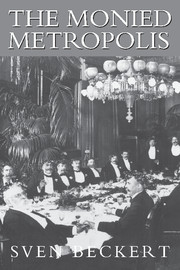Book contents
- Frontmatter
- Dedication
- Contents
- Maps, Graphs, and Illustrations
- Acknowledgments
- Abbreviations
- The Monied Metropolis
- Introduction
- Part I Fortunes, Manners, Politics
- Part II Reluctant Revolutionaries
- Part III A Bourgeois World
- 7 Democracy in the Age of Capital
- 8 The Culture of Capital
- 9 The Rights of Labor, The Rights of Property
- 10 The Power of Capital and the Problem of Legitimacy
- Epilogue
- Notes
- Index
9 - The Rights of Labor, The Rights of Property
Published online by Cambridge University Press: 05 July 2014
- Frontmatter
- Dedication
- Contents
- Maps, Graphs, and Illustrations
- Acknowledgments
- Abbreviations
- The Monied Metropolis
- Introduction
- Part I Fortunes, Manners, Politics
- Part II Reluctant Revolutionaries
- Part III A Bourgeois World
- 7 Democracy in the Age of Capital
- 8 The Culture of Capital
- 9 The Rights of Labor, The Rights of Property
- 10 The Power of Capital and the Problem of Legitimacy
- Epilogue
- Notes
- Index
Summary
While bourgeois New Yorkers had forged a shared culture, and had amassed unprecented economic power by the 1880s, their assertion of this power, their conspicuous consumption, and the striking inequality of wealth within the city and the nation propelled other social groups, particularly workers, to challenge them at the workplace and the polls. This mobilization, in turn, drove the city's economic elite even closer together and enabled them to act at times collectively. Bourgeois class formation thus developed in relation to working-class formation; bourgeois class identities were sharpened by workers' collective action. This relationship was new, a result of the emerging dominance of industrial over merchant capital after the Civil War.
During the 1880s and 1890s, with the strife over slavery and Reconstruction left behind, concerns about wage labor moved to the center stage of bourgeois discourse. “The silver question is a bubble of insignificance,” and the “tariff issue … of minor importance,” compared to the “relation that prevails between labor and capital,” wrote a perceptive reader to the editors of Iron Age. The Nation seconded this notion, observing that “the labor problem [received] an amount and kind of discussion from all classes such as it never received before.” Indeed, Iron Age, the journal of iron manufacturers, discussed the “labor question” regularly and in great detail, as did the Oil and Faint Manufacturer and the National Bottlers' Gazette, and aside from discussions of new technologies and the economic outlook of the trade, it was the most important topic in their pages.
- Type
- Chapter
- Information
- The Monied MetropolisNew York City and the Consolidation of the American Bourgeoisie, 1850–1896, pp. 273 - 292Publisher: Cambridge University PressPrint publication year: 2001



